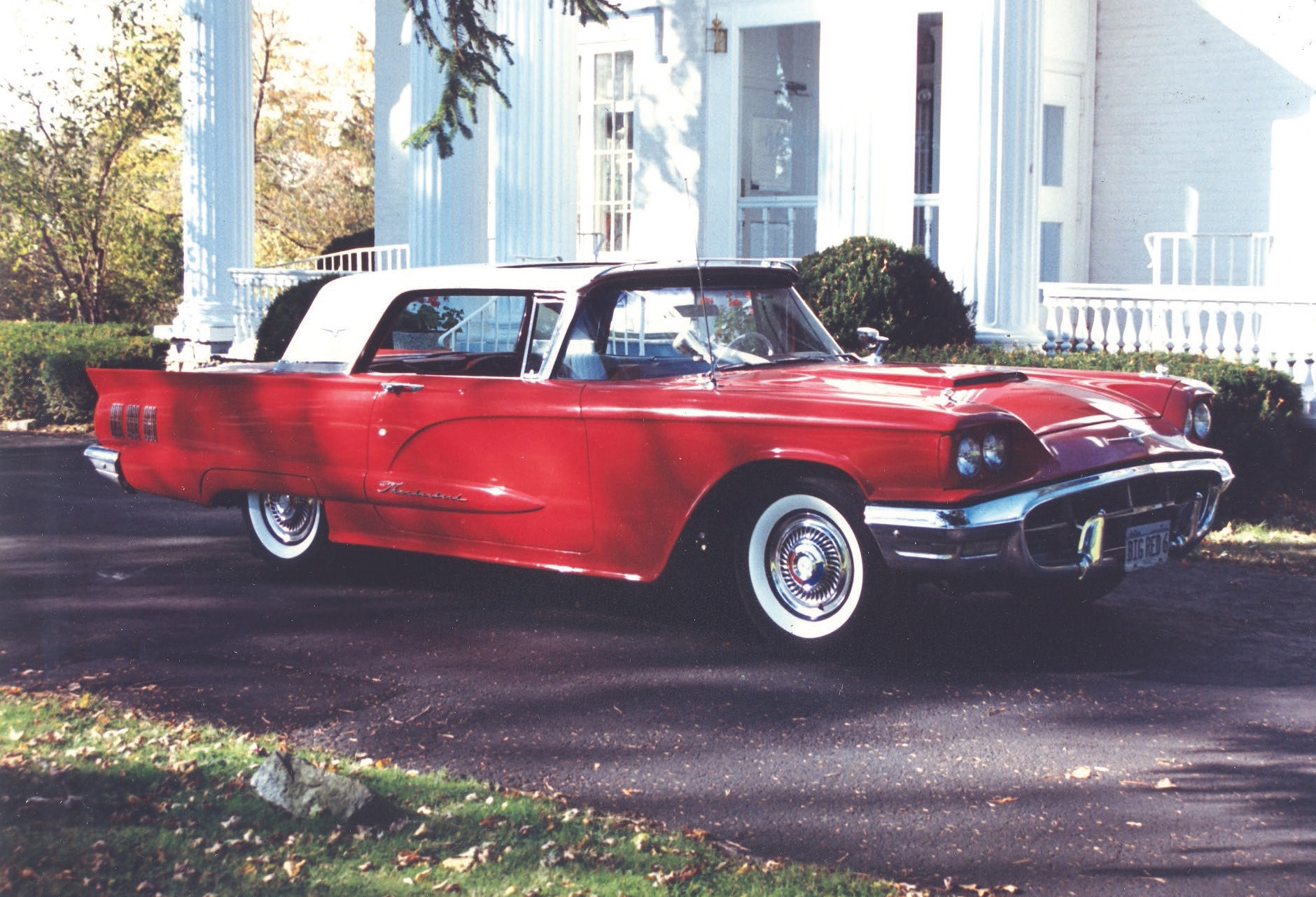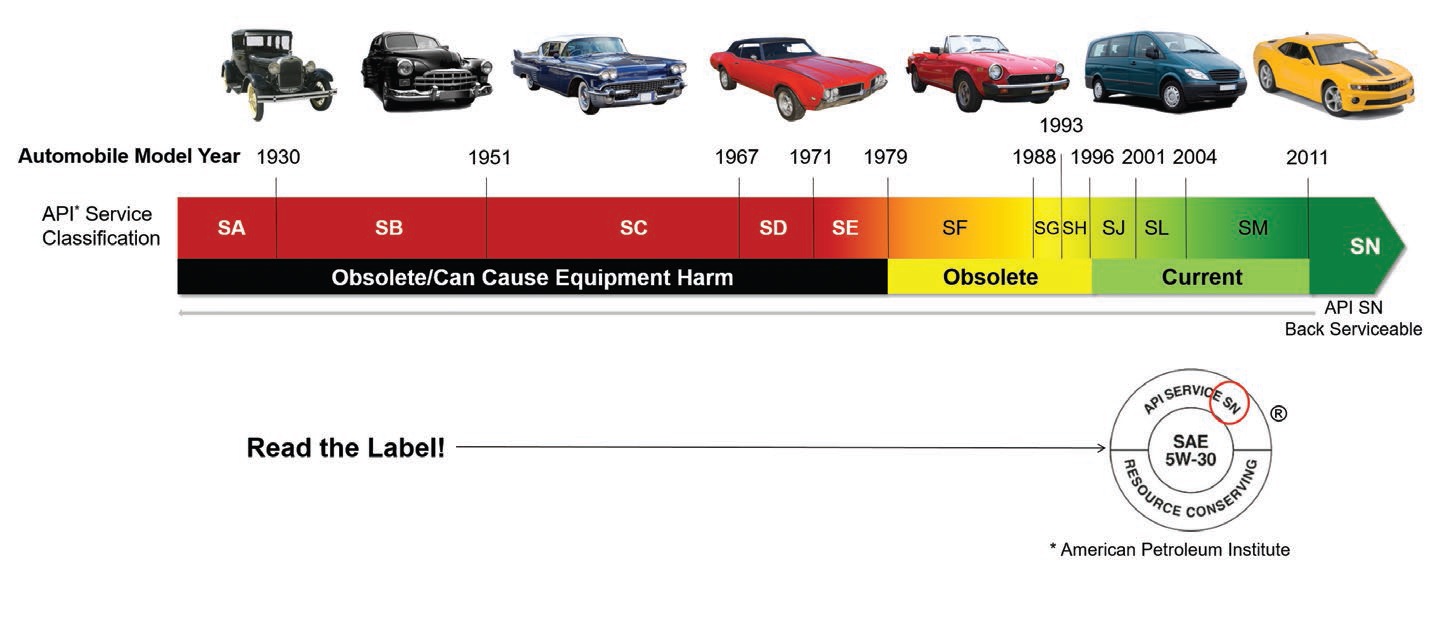4,000 miles? Try 100,000
Michael Anderson | TLT President's Report October 2017
The road to longer car warranties was paved by the hard work and research of the tribology community.

Multi-viscosity motor oils and other innovations in lubrication are among the key reasons why car warranties are 25 times longer than they were for this 1960 Ford Thunderbird.
AS MANY KNOW, ONE OF MY HOBBIES IS VINTAGE AUTOMOBILES, including my 1960 Ford Thunderbird, pictured above. I recently looked at some of the literature that came with the car when it was purchased new, and to my surprise I read that the factory warranty on my 1960 Thunderbird was 4,000 miles or 90 days, whichever came first. Compare that to today’s typical factory warranties of 36,000 miles and 36 months, with some automobile manufacturers offering up to 100,000 miles and five years. Drive trains tend to have higher warranty periods.
Why would a manufacturer only warranty its vehicles for such a short time, especially when the car made it to over 150,000 miles and 57 years? More important, why do today’s cars have longer warranties? The answer is, of course, tribology!
Not only are the warranties much longer today, but the required maintenance is much less. Cars in 1960 recommended lubrication at every 1,000 miles for parts such as ball joints, steering linkage, universal joints and more. Recommended engine oil drain intervals were 4,000 miles. Minor tune ups were required every 6,000 miles and major tune ups at 12,000. There were 28 items that needed lubrication on a regular basis with 13 different lubricants and greases specified. Today’s cars are nearly maintenance free by comparison. Sealed for life bearings, self-contained suspension parts, improved motor oil formulations have resulted in increased oil drain intervals, and the use of synthetic motor oils can increase the drain interval significantly longer. Tribology and engineering design have worked together to improve the reliability of the automobile’s drive train.
SAE, API and ASTM are all familiar organizations within the automotive and transportation industries. They set the requirements for the performance properties of the lubricants used in our vehicles. There are many important properties that all motor oils must possess. The API service classification is a rating based on a series of tests (
see Figure 1). Successful passing of these tests will get the API service classification designation. This designation can be found on all oil cans and is listed in the API doughnut, certifying the lubricant is appropriate for modern-day cars. Newer vehicles are designed to run at higher temperatures and under tighter tolerances for increased performance. Tribologists are employed to formulate engine oils for improved wear protection of all the moving parts in an engine.
 Figure 1. API: Matching engine oils by car year. (Figure courtesy of Petroleum Quality Institute of America.)
Figure 1. API: Matching engine oils by car year. (Figure courtesy of Petroleum Quality Institute of America.)
Until about 1951, there had been only two service classifications, SA and SB for motor oils with lower performance requirements. It was common to overhaul or rebuild engines. Since then there have been major improvements in the engine designs and motor oils to meet the higher performance and convenience demands required by today’s drivers and car manufacturers. The current API service classification is now at Level SN, with all grades SH and lower now being obsolete for use in motor vehicles. Today you rarely ever hear of a lubricant-related engine failure. Using these improved grades is vital to long life and wear prevention.
Tribological testing is performed in the development of engine oil formulations using simple bench tests in rotary motion as well as reciprocating motions under conditions that simulate those occurring in motor vehicles. Also, more detailed component tests such as engine test stands and dynamometers are employed to prove wear protection. Automobile manufacturers perform track and field testing under extreme conditions. We the consumers are the final quality check, and we hope that enough bench, component and field tribology tests are performed during development that the vehicles perform as designed.
So the next time you think of how much more maintenance free and dependable your newer automobile is today, it is because of the many tribologists who worked on improving motor oil formulations along with improved materials and more stringent mandatory testing. Remember, it was the work of a tribologist when you see that odometer turn to a six-digit number.
 Mike Anderson is Area Manager Asia Pacific/Latin America for Falex Corp. in Sugar Grove, Ill. You can reach him at manderson@falex.com
Mike Anderson is Area Manager Asia Pacific/Latin America for Falex Corp. in Sugar Grove, Ill. You can reach him at manderson@falex.com.